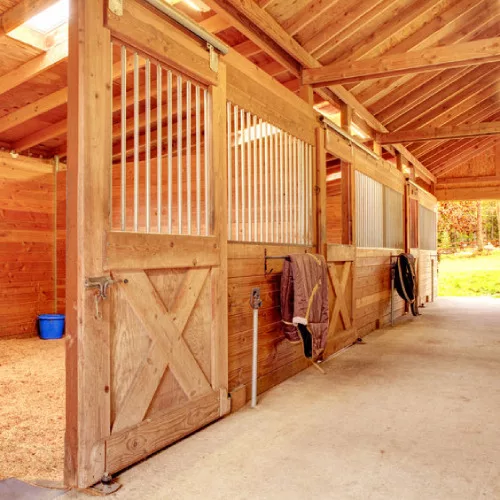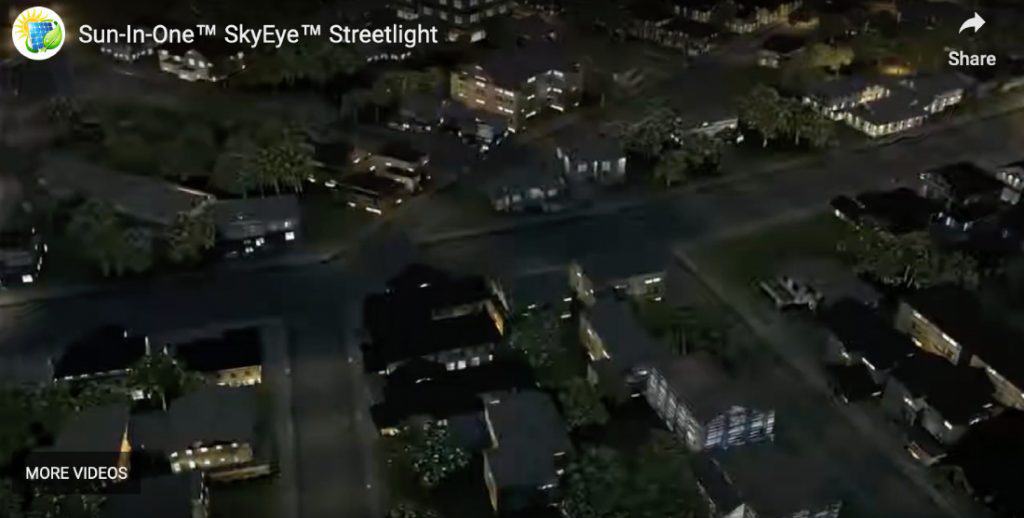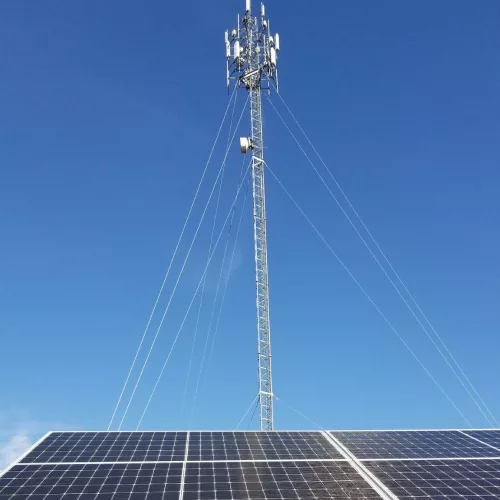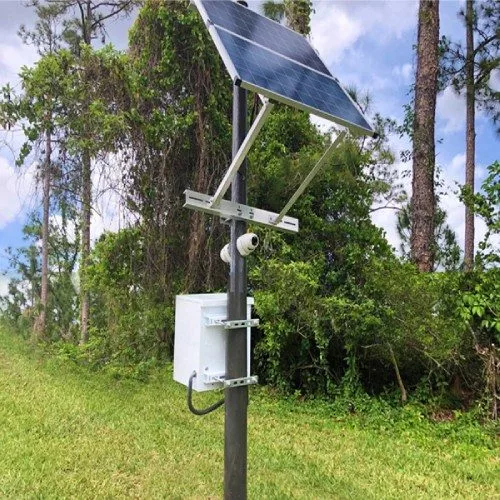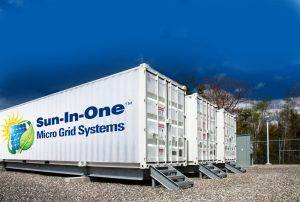Learn more about solar With
Sun-In-One™

What is CRI?
CRI is a measure of a lights sources ability to show objects colors “realistically or naturally” compared with their true color or Sunlight. High CRI lights also put off professional level of color all the time, this used to be reserved just for professional photographers or Art galleries. Whether you’re an artistic person or not, our eyes are sensitive to light quality and color. A red shirt lit directly with noontime sunlight will render much different than if lit under a fluorescent bathroom light. The High CRI of our LED will help identify objects with the better light. Why is the Sun-In-One LED with a 95+ CRI important to you? – Displays all colors in almost natural light, making it easier to distinguish slight shades of colors and tones – See the true color of meats, fruits, and vegetables in the grocery display case – Enhances skin tone, hues, and textures, making rooms and products in them look their best – converting foot traffic into sales – Reduces eye strain in the office, workplace or at school, increasing productivity, advertising signage and safety – Easier to distinguish colors in security cameras – Less light distortion at night when driving and the colors you are seeing a closer to real colors that could decrease your reaction time while driving. What is CRI and why you want an LED with a high CRI? Color Rendering Index, commonly referred to as CRI, is a method we can use to measure how color looks to the human eyes, depending on the light source as compared to the sun. The CRI provides a scale of values up to 100, with 100 being the best color rendering light quality and a value below zero representing very poor color rendering. When a light has a CRI of 100, it means that there is no difference in color rendition between the light and the reference light (the sun). Likewise, a CRI of 75 means that the light bulb renders a 75% replication of the visible colors that the sun shows, given that both lights have the same color temperature. That is the cri of the average streetlight. Our eyes are sensitive to light quality and color. The higher the CRI value, the more accurate the colors will be.
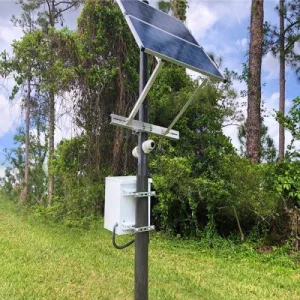
How to pick a solar power kit for a security camera
First, you need to know how much power your camera communications and switching consumes and how long it needs to run per day. You need to know three things in determining this power you need to know the voltage of each devise, the Wattage and the amperage. If you have two of the three you can determine the third with Oms law calculator. What size solar kit do you need? This is determined by your usage. To figure out is add the following information together so that you know your usage at each voltage. 12,24 or 48 volts. All of these are used to come up with the voltage of each device and the wattage and amperage. Second, you need to know where you will install the solar panel and how much sunlight it will receive. Where is in the country is your installation, this helps to determine the size and capacity of the solar panel and battery. Southern Florida ( zone 5) does not get the same power from the sun than Seattle ( Zone 1) This will affect the efficiency and performance of the solar power kit. Third, you need to know what kind of weather conditions your solar power kit will face and how durable it is. This will ensure that your solar power kit can withstand rain, snow, wind, dust and other elements. Also, your battery is sensitive to temperature so if you are in zone 1 or 2 you need to make sure that your battery box is insulated to extend the life of your batteries. By knowing these factors, you can pick a solar power kit that suits your security camera needs.
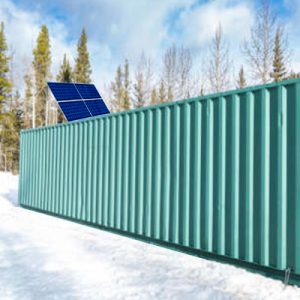
what to know in purchasing a shipping-container lighting kit
What people need to know in purchasing a Shipping Container lighting Kit? Solar shipping container lighting kits are a convenient and cost-effective way to provide illumination for off-grid applications. These kits include solar panels, batteries, charge controllers, LED lights, wiring, and mounting hardware. Some of the information people need to know when looking for a solar shipping container lighting kits are: The power output and efficiency of the solar panels: (21% is Best in the Market) The battery capacity and lifespan of the batteries. 5 year warranty on AGM battery’s and 7 years on Lithium and you need to have at least 3 days storage of your loads if you only use the system every few days you can get away with 2 days of storage this reduces the cost but shortens the life of some the batteries. The features and functions of the charge controllers. An MPPT controller that saves up to 30 % more energy than that of a PMW controller and stores the history of the solar and usage production for up to 30 days easier understanding of the system if there is a future issue. The brightness and color temperature of the LED lights.High CRI over 90 and 4000K are best for light quality and lumen output. The length and quality of the wiring One size does not fit all Custom is best or standard layout all prewired. The longer the run or higher the amps the larger the wire size needs to be The ease and security of the mounting hardware 2 – 100 pounds of magnetic force on each 10 pound fixture gives you more than enough strength for a ballasted system but pole mounted solar panels need to be mounted higher that the shipping container) The battery box can be mounted in a shipping container but putting two 2X4 from floor to ceiling and mounting the box to them The warranty and customer service of the kit provider. 5 years on Parts and Labor if the system is one year you get what you pay for because if they will not stand behind it for more than a year you have to ask why? Can you add AC to the kit to charge battery’s or Cell phone and other electronic devices. Yes, but that Is not just a lighting kit and it is lighting and power kit is sized based on estimated usage. Shading on the solar panel. If you have any shading of the solar panel you need to add more solar panels to help cover this limiting of production. The Best solar window is from 9am to 4 PM. To the south in the northern hemisphere and north in the southern hemisphere.

Are you looking for a way to illuminate your gazebo with solar power?
we have many options to choose from. Solar gazebo lights are a great solution for outdoor lighting that is eco-friendly, energy-efficient and cost-effective. Here are some information of gazebo solar lighting that you might find useful. Solar gazebo lights are LED lights that are powered by a solar panel with a battery and solar and lighting controls attached to them or placed nearby. The solar panel collects sunlight duringthe day and converts it into electricity that is stored in a battery. At night, the battery provides power to the lights, which can be turned on and off by a switch, a remote control or a timer. There are different types of solar gazebo lights available, depending on your needs and preferences. Some of them are: Solar string lights: These are strings of small LED bulbs that can be hung around the gazebo or draped over its roof. They create a festive and romantic atmosphere with their warm and colorful glow. Some solar string lights have different lighting modes, such as steady, flashing or fading. Solar vapor tight lights: These are hanging lights that can be suspended from the gazebo ceiling or hooks. They provide more focused and bright illumination for reading, dining or playing games. Some lights can have motion sensors that activate them when someone approaches. Solar chandelier lights: These are elegant and decorative lights that resemble a chandelier. They can add a touch of sophistication andstyle to your gazebo with their intricate designs and shapes. Some solar chandelier lights have multiple light sources that can be adjusted individually. They light bulbs should be 12 or 24 volt but if you ready want AC bulbs there will be added expense for an inverter and a larger system needed for the inverter. Solar flood lights: These are powerful and wide-angle lights that can illuminate a large area around your gazebo. They are ideal for security and safety purposes, as they can deter intruders and animals. Some solar flood lights have adjustable brightness and sensitivity settings if you order the dimming function. When choosing solar gazebo lights, you should consider some factors, such as: The size and shape of your gazebo: You should measureyour gazebo and choose solar lights that fit its dimensions and style. You should also consider how much light you need and where you want to place the lights. The quality and durability of the solar lights: Our solar lighting kits are made of weather-resistant and sturdy materials, such as fiberglass,metal or glass. Your battery capacity and lifespan is based on the amount of usage and the daily run time of the solar lights, as well as their 5-yearwarranty and customer service. The installation and maintenance of the solar lights: You should choose solar lights that are easy to install and operate, without requiring any wiring or tools. All of our lighting kits are close to plug and play with some small assembly. You should also follow the instructions and tips provided by the our manual on how to care for and clean the solar lights and panels. Solar gazebo lighting is a smart and convenient way to enhance your outdoor living space with renewable energy. By choosing the right solar lights for your gazebo, you can enjoy a cozy and inviting ambiance at night, without worrying about electricity bills or environmental impact.

